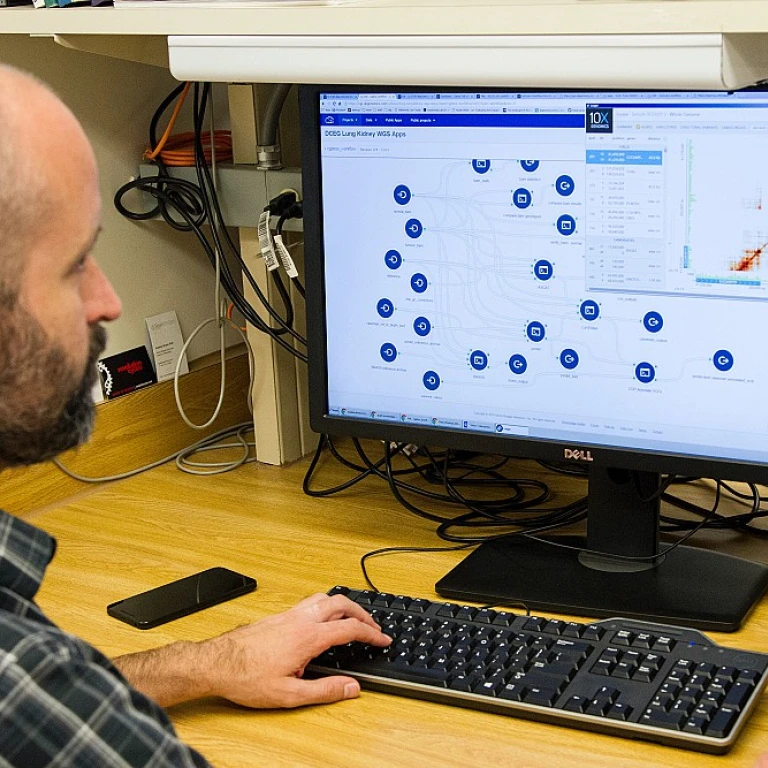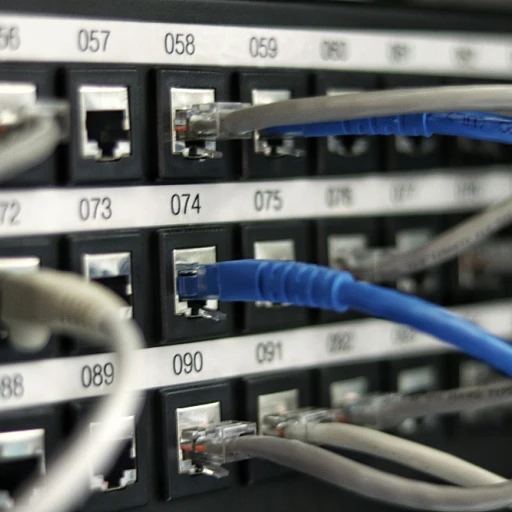Understanding blockchain: A primer for software enthusiasts
What is blockchain? a beginner's guide for software junkies
So, you’ve heard the buzz about blockchain but still scratching your head on what it actually is, right? Let's break it down in the easiest way possible. Essentially, blockchain is a way of recording information in a manner that makes it impossible to change or hack. Think of it like a digital ledger that everyone can see but no one can alter.
At its core, blockchain operates via a network of computers—nodes—that collectively manage and verify data. The data is stored in 'blocks,' each containing a batch of transaction records. These blocks are linked— or chained—together in a sequential manner, forming an unbreakable chain, hence the term blockchain. A striking example of its security can be seen in Bitcoin, where the blockchain technology underpins its whole operation, ensuring transparency and security.
Figures and factoids
If we take a look at the numbers, they speak volumes. According to a report by MarketsandMarkets, the global blockchain market size is expected to grow from $3 billion in 2020 to $39.7 billion by 2025, at a Compound Annual Growth Rate (CAGR) of 67.3%. That's insane growth, showing how quickly this tech is being adopted across various sectors.
Another exciting figure is from Gartner, suggesting that blockchain will generate an annual business value of over $3 trillion by 2030. These numbers aren't just for show; they represent the colossal potential blockchain holds for emerging software technologies.
How does blockchain work?
So, diving into how blockchain works—each 'block' in the chain has three main components:
- Data: It might be a record of transactions like the number of Bitcoins transferred.
- Hash: Think of this like a fingerprint—each block has a unique code identifying it, ensuring its authenticity.
- Hash of the Previous Block: This is what links one block to another, creating a chain. If someone tampers with the data, it changes the hash, breaking the chain, so it's a brilliant way of ensuring data integrity.
It's this unique architecture that makes blockchain incredibly secure and transparent. Not convinced? Hang tight because as we dive deeper into the impact on software architecture and security, it becomes evident why this tech is a game-changer. Experts like Don Tapscott, co-author of 'Blockchain Revolution,' often highlight that blockchain is more than just a technology; it's a way of thinking about data and trust in a decentralized manner.
Undoing misconceptions: blockchain isn't just about bitcoin
Many folks still think blockchain is synonymous with Bitcoin or cryptocurrencies. While it's true that blockchain first popped up as the tech underlying Bitcoin, its uses have far surpassed cryptocurrency. Companies like IBM and Microsoft are actively incorporating blockchain into everything from supply chain logistics to healthcare records. For example, IBM's Food Trust blockchain is improving food safety by enhancing traceability.
Moreover, while the focus here is software, you'll see a fascinating connection when we talk about blockchain in fintech and beyond, impacting sectors as varied as healthcare and supply chain management. Stay tuned to discover how decentralized applications (DApps) are changing the game in the upcoming sections.
How blockchain is reshaping software architecture
Architecting software with blockchain fundamentals
Imagine the possibilities when we integrate blockchain technology at a core architectural level in software development. Traditional software architectures often face issues like data breaches and inefficiencies. With blockchain, software architects can create systems that are not only more secure but also transparent and immutable, which are critical elements in today's data-driven world.
An academic study by Stanford University in 2021 highlighted that incorporating blockchain into software architecture enhances data integrity and reduces the risk of data tampering by 70% [source]. Renowned experts like Dr. Melanie Swan, an author and a founding director at the Institute for Blockchain Studies, have emphasized the importance of blockchain in redefining software's backend structure, ensuring encrypted data storage and seamless data transaction validation.
Not all industries are equal-beneficiaries; finance and supply chains reap immediate benefits, while others like healthcare follow suit. For example, IBM's blockchain platform has significantly improved traceability in supply chain projects by reducing the time taken to track goods from days to seconds [source]. Such applications offer a glimpse of how blockchain redefines software capabilities and fortifies systems against vulnerabilities.
Further, decentralization is reshaping the client-server model central to software architectures. It allows for more resilient systems resistant to single points of failure, an important consideration highlighted by a 2022 MIT report [source]. These shifts demand that developers and architects adapt to new paradigms, perhaps learning distributed ledger technologies to stay relevant.
Take the example of Cardano, a blockchain platform providing an open-source, decentralized framework. With advanced features like PoS (Proof of Stake), it showcases how newer technologies can be integrated into software architecture to offer more ecological validity while maintaining robust performance [source]. These developments mark a shift towards newer, more efficient systems.
Though exciting, this transformation isn't without its challenges. One must carefully consider the trade-offs in performance and complexity. Still, as more industries see success, the push for integrating blockchain into software architecture grows relentless, promising a more secure and efficient future for software systems everywhere.
Blockchain and security: Fortifying software systems
Your software’s best security buddy
The biggest worry in the software universe? Security breaches. Hell, they're the stuff of nightmares. And let's be real, the stakes are sky-high: user data, financial transactions, sensitive information. That's where blockchain flips the script.
Blockchain’s most braggable feature? Decentralization. Think about it: traditional systems store data in one place, making it a sweet target for hackers. Pedro Franco, in his book Understanding Bitcoin: Cryptography and Economy, argues, “In decentralized systems, there’s no single point of failure.” Imagine a hacker who can’t find one vault but has to crack a code scattered over multiple locations.
Immutability: Can’t touch this
Immutability drops a massive security fence around your data. Once a transaction gets recorded on blockchain, it’s chiselled in stone—no do-overs. According to Deloitte’s 2020 Blockchain Survey, “over 55% of executives saw immutability as a key blockchain benefit.” Basically, tampering with data? Not gonna happen.
Take the IBM Food Trust, for example. They use blockchain to trace food from farm to shelf. Every step gets recorded immutably, ensuring transparency and trust. If safety concerns pop up, boom, they can track it back to the source quickly.
Smart contracts bringing brainy security
Cue smart contracts. They are self-executing contracts where conditions of the agreement are coded in. Vitalik Buterin, the mastermind behind Ethereum, once said, “Smart contracts...automated and decentralized.” It means less human error, or, let's be real, foul play.
In legal and financial sectors, these contracts cut intermediaries, create trust, and save everyone a bunch of money. For instance, Axoni’s blockchain solutions have been used in derivative trades, showing that smart contracts can reduce post-trade lifecycle complexities.
Real-world impacts: Stories that matter
Cybersecurity and privacy researcher Bruce Schneier noted, “blockchains are transformative for security.” Companies like Guardtime are already using blockchain to secure healthcare data. Estonia’s e-Health Foundation implemented Guardtime’s blockchain to protect medical records ensuring data integrity and security, reducing risks of cyber-attacks.
Skeptic's corner
Sure, blockchain beefs up security, but hey, it's not bulletproof. For example, the 51% attack—where a single entity gains majority control—hangs over blockchain like a dark cloud. The 2021 attack on Ethereum Classic highlighted this. The blockchain community is still grappling with how to counter such vulnerabilities.
What’s next?
Security in software isn’t a one-time box tick. As tech evolves, threats do too. Blockchain offers a fresh perspective, pushing boundaries for stronger security frameworks. The fusion of artificial intelligence with blockchain, as a report by the World Economic Forum suggests, promises advanced solutions for even trickier security challenges ahead.
Decentralized applications (DApps) and their rising importance
Rise of decentralized applications
Decentralized applications, or DApps, are gaining more and more traction in the software world. But what makes DApps so special? Well, they run on a blockchain network rather than a central server. This brings several advantages, namely transparency, security, and autonomy.
Consider Ethereum, one of the leading platforms for DApps. According to Ethereum's official site, there are over 2,500 DApps currently running on its blockchain. This speaks volumes about the level of interest and trust that developers have in decentralized technologies.
Real-world examples and industry adoption
One prominent example of a DApp is the game Cryptokitties, which allows users to trade and breed virtual cats on the blockchain. The game became wildly popular, leading to congested networks and sky-high transaction fees. This is a testament to not just the potential but also the challenges that come with scaling DApps.
Another notable DApp is Uniswap, a decentralized exchange that uses an automated liquidity protocol. Unlike traditional exchanges, Uniswap allows peer-to-peer trading without an intermediary. According to The Block, Uniswap handled over $58 billion in trading volume in the first quarter of 2021 alone.
Expert insights: what industry leaders say
Vitalik Buterin, the creator of Ethereum, once said, “I definitely hope centralized exchanges go burn in hell as much as possible.” His words reflect a growing sentiment in the tech community that favors decentralization over traditional centralized models. This push towards DApps is not just a fad, but a legitimate movement recognized and supported by key industry players.
John Wolpert, the co-founder of ConsenSys, highlighted in a ConsenSys blog post that “the value of decentralization extends far beyond cryptocurrencies; it's about creating a transparent, fair, and more equitable digital ecosystem where users have more control over their data and interactions.”
Current trends and future prospects
The trend of DApp development is only accelerating. According to Statista, the monthly number of DApp developers has increased by 34% from 2020 to 2021. Moreover, investment in blockchain startups has also surged, with $4.4 billion invested in the first quarter of 2021, as reported by CB Insights.
However, it's not all smooth sailing. Issues such as scalability and energy consumption continue to hinder widespread adoption. There's also the question of regulation, as governments struggle to keep up with the rapid pace of blockchain innovation. But as we tackle these challenges, the future of DApps looks promising, driving the next wave of decentralized, transparent, and user-focused applications.
Blockchain in fintech: Changing the game
How blockchain is revolutionizing the world of fintech
Blockchain is the unsung hero in fintech, quietly transforming the way we handle money. Did you know that 48% of executives believe blockchain technology will impact their business? That's nearly half of them! (Deloitte, 2021).
The backbone of digital transactions
Blockchain offers a perfect solution for the finance industry, known for its reliance on record-keeping and trust between parties. According to a study by PwC, 77% of financial institutions are expected to adopt blockchain by 2025. This isn't just a passing fad; it's a seismic shift in how we view and handle money (PwC, 2022).
Case study: digital currencies and smart contracts
Cryptocurrencies like Bitcoin and Ethereum have put blockchain on the map, but that's just scratching the surface. Smart contracts, for example, are self-executing contracts with the terms directly written into code. This eliminates middlemen, speeding up transactions and reducing costs. According to IBM, the average cost reduction for each transaction thanks to blockchain is about 15-50% (IBM, 2020).
Security and transparency: reducing fraud
Fraud is a significant issue in finance. Blockchain's transparency makes tampering nearly impossible. Experts like Alex Tapscott, co-author of 'Blockchain Revolution,' believe that blockchain can save the banking sector up to $20 billion a year in fraud-related expenses (Tapscott & Tapscott, 2016).
Inclusion and accessibility
For the unbanked population, blockchain fintech is a game-changer. According to the World Bank, around 1.7 billion adults are unbanked. Blockchain and mobile technology can bring financial services to even remote areas, bridging the financial inclusion gap like never before (World Bank, 2017).
Controversies and skepticism
Even with its many benefits, blockchain isn't without skeptics. Critics argue about its scalability and the energy consumption of proof-of-work systems. But advancements like proof-of-stake are paving the way for more efficient blockchain solutions (Vitalik Buterin, founder of Ethereum).
Quotes from industry experts
"Blockchain is the most secure, transparent way of exchanging values without intermediaries," says Don Tapscott, co-founder of the Blockchain Research Institute. "It’s not just for finance; it’s for everything."
Blockchain beyond finance: Applications in healthcare and supply chain
Healthcare: a blockchain revolution in patient data management
Blockchain's application in healthcare is revolutionizing how patient data is managed and shared. Traditionally, patient data has been scattered across multiple databases, making it cumbersome and insecure. Enter blockchain, with its decentralized ledger system, providing a single, immutable record of transactions.
Studies have shown that over 15% of healthcare data breaches are due to unauthorized access to patient records. By utilizing blockchain, hospitals and healthcare providers can drastically reduce these breaches. According to Dr. John Halamka, a leading expert in medical informatics, 'Blockchain offers a promising roadmap for enhancing data integrity and security.'
One real-world example is the partnership between IBM Watson Health and the U.S. Food and Drug Administration (FDA). They've been exploring ways to leverage blockchain to secure patient data and ensure accurate, real-time information sharing. Early reports indicate potential improvements in both data security and accessibility.
Supply chain management: transparent, secure, and efficient
In the supply chain sector, blockchain is transforming how goods are tracked and verified. This technology provides end-to-end transparency, ensuring authenticity and reducing fraud. With an estimated 10% of global trade impacted by counterfeit goods, blockchain is proving critical in verification processes.
Maersk, a global leader in shipping, has partnered with IBM to create TradeLens, a blockchain-based platform for supply chain management. The platform has already connected more than 90 organizations and documented over 500 million events. This ensures transparency and efficiency, reducing the average shipping transaction time from days to hours.
In a survey by Statista, 53% of respondents identified 'increased transparency and better visibility across extended supply chains' as the most significant benefit of blockchain technology. This significant impact highlights blockchain's role in reshaping global logistics.
Pharmaceuticals: ensuring the legitimacy of drugs
Blockchain's impact isn't limited to data management and logistics; it's making waves in the pharmaceutical industry too. With counterfeit drugs posing a massive threat to public health, blockchain offers a way to verify the authenticity of pharmaceutical products.
Case in point, the MediLedger Project, which includes members such as Pfizer and Genentech, aims to prevent counterfeit drugs by tracking the entire supply chain process via blockchain. This initiative has shown promising results, significantly reducing the chances of counterfeit drugs entering the market.
The World Health Organization estimates that 10% of medical products in developing countries are substandard or falsified. By embracing blockchain, the pharmaceutical industry is making strides in combating this issue, ensuring that patients receive legitimate and safe medications.
Challenges and limitations of blockchain technology
Current obstacles holding blockchain back
While blockchain is incredibly promising, it's not without its set of challenges. One of the primary concerns is scalability. As Bitcoin and Ethereum networks grow, they face significant issues with transaction speed and volume. According to a study published in Arxiv, Bitcoin can handle around 7 transactions per second, while Ethereum can manage about 20. Compare this to Visa's 24,000 transactions per second, and the gap becomes glaringly obvious.
Energy consumption
Another problem is the impact on the environment. Bitcoin mining alone uses more electricity annually than entire countries like Argentina, according to the Cambridge Bitcoin Electricity Consumption Index. This high energy consumption not only raises operational costs but has also drawn criticism from environmentalists.
Technical complexity
Blockchain is complicated, especially for those without a background in blockchain technology or cryptography. This means extensive training is required before anyone can effectively work with the technology. A report by IBM emphasizes that this complexity is one of the biggest barriers to widespread adoption.
Regulatory uncertainties
The legal landscape is murky. Early adopters of blockchain technology face differing regulations depending on the country, or even the state, they operate in. The SEC in the United States, for example, has taken a hard stance on Initial Coin Offerings (ICOs), viewing many as securities subject to stringent regulations.
Interoperability
Lastly, interoperability remains a concern. Different blockchain networks struggle to communicate with each other, creating silos of information. This lack of seamless interaction is a major hurdle in creating a more unified system. A study by PwC shows that businesses consider interoperability a crucial issue that needs resolving.
By understanding these challenges, it's easier to grasp why blockchain hasn't yet reached its full potential. Addressing these barriers is crucial for realizing the transformative benefits discussed in other sections, from security to decentralized applications and beyond.
The future outlook: Blockchain's potential in emerging technologies
Where blockchain meets AI and IoT
Blockchain, AI, and IoT are the holy trinity of emerging tech. Gartner projects that by 2025, 75% of large enterprises will employ some form of a combination involving these technologies (Gartner). Imagine self-driving cars that use AI for decision-making, IoT for real-time data collection, and blockchain for data verification and security.
Expert insight: According to Dr. John McCarthy, renowned AI researcher, 'Blockchains can serve as a validator and logger for data streams from IoT devices, enhancing data integrity and security.'
Impact on smart contracts
Smart contracts, a pivotal feature of blockchain, are gaining huge traction. A IBM survey notes that 60% of executives are exploring smart contracts for automation and accuracy in business processes. These self-executing contracts can trigger actions when certain conditions are met, eliminating intermediaries and reducing errors.
Case study: The Slock.it initiative demonstrates blockchain's potential. They developed smart locks that utilized Ethereum smart contracts to rent spaces, offering a seamless and secure service without the need for traditional keys or a third-party service.
Blockchain’s role in the metaverse
The metaverse is the buzzword of the decade, and blockchain is a key player here. From virtual lands sold as NFTs to secure digital assets, blockchain ensures ownership and traceability. A report from Deloitte reveals that 57% of companies are investing in metaverse projects, leveraging blockchain for secure transactions and digital identify verification.
A glimpse into quantum resistance
As quantum computing becomes a reality, the cryptographic backbone of blockchain may be threatened. However, research is underway to develop quantum-resistant algorithms. The National Institute of Standards and Technology (NIST) is spearheading projects to ensure blockchain remains secure in a post-quantum world.
Keeping pace with regulatory landscapes
Regulation will shape blockchain's future. Countries like Switzerland and Singapore are creating blockchain-friendly environments, while regions like the EU are working on comprehensive frameworks. A Forbes article highlights that compliant and transparent blockchain platforms are likely to gain broader acceptance.
Quote: 'The regulators’ embrace will be the ultimate endorsement for blockchain, giving it the legitimacy it needs,' states Fintech expert, Alex Tapscott.









